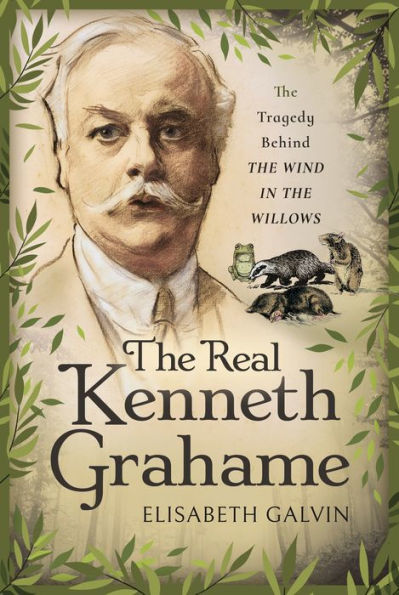Home
the Real Kenneth Grahame: Tragedy Behind Wind Willows
Barnes and Noble
Loading Inventory...
the Real Kenneth Grahame: Tragedy Behind Wind Willows
Current price: $34.95

Barnes and Noble
the Real Kenneth Grahame: Tragedy Behind Wind Willows
Current price: $34.95
Loading Inventory...
Size: Hardcover
*Product information may vary - to confirm product availability, pricing, shipping and return information please contact Barnes and Noble
He wrote one of the most quintessentially English books, yet Kenneth Grahame (1859 – 1932) was a Scot. He was four years old when his mother died and his father became an alcoholic, so Kenneth grew up with his grandmother who lived on the banks of the beloved River Thames. Forced to abandon his dreams of studying at Oxford, he was accepted as a clerk at the Bank of England where he became one of the youngest men to be made company secretary. He narrowly escaped death in 1903 when he was mistaken for the Bank’s governor and shot at several times. He wrote secretly in his spare time for magazines and became a contemporary of contributors including Rudyard Kipling, George Bernard Shaw, and WB Yeats. Kenneth’s first book,
Pagan Papers
(1893) initiated his success, followed by
The Golden Age
(1895) and
Dream Days
(1898), which turned him into a celebrated author. Ironically, his most famous novel today was the least successful during his lifetime:
The Wind in the Willows
(1908) originated as letters to his disabled son, who was later found dead on a train line after a suspected suicide. Kenneth never recovered from the tragedy and died with a broken heart in earshot of the River Thames. His widow, Elspeth, dedicated the rest of her life to preserving her husband’s name and promoting his work.
Pagan Papers
(1893) initiated his success, followed by
The Golden Age
(1895) and
Dream Days
(1898), which turned him into a celebrated author. Ironically, his most famous novel today was the least successful during his lifetime:
The Wind in the Willows
(1908) originated as letters to his disabled son, who was later found dead on a train line after a suspected suicide. Kenneth never recovered from the tragedy and died with a broken heart in earshot of the River Thames. His widow, Elspeth, dedicated the rest of her life to preserving her husband’s name and promoting his work.
He wrote one of the most quintessentially English books, yet Kenneth Grahame (1859 – 1932) was a Scot. He was four years old when his mother died and his father became an alcoholic, so Kenneth grew up with his grandmother who lived on the banks of the beloved River Thames. Forced to abandon his dreams of studying at Oxford, he was accepted as a clerk at the Bank of England where he became one of the youngest men to be made company secretary. He narrowly escaped death in 1903 when he was mistaken for the Bank’s governor and shot at several times. He wrote secretly in his spare time for magazines and became a contemporary of contributors including Rudyard Kipling, George Bernard Shaw, and WB Yeats. Kenneth’s first book,
Pagan Papers
(1893) initiated his success, followed by
The Golden Age
(1895) and
Dream Days
(1898), which turned him into a celebrated author. Ironically, his most famous novel today was the least successful during his lifetime:
The Wind in the Willows
(1908) originated as letters to his disabled son, who was later found dead on a train line after a suspected suicide. Kenneth never recovered from the tragedy and died with a broken heart in earshot of the River Thames. His widow, Elspeth, dedicated the rest of her life to preserving her husband’s name and promoting his work.
Pagan Papers
(1893) initiated his success, followed by
The Golden Age
(1895) and
Dream Days
(1898), which turned him into a celebrated author. Ironically, his most famous novel today was the least successful during his lifetime:
The Wind in the Willows
(1908) originated as letters to his disabled son, who was later found dead on a train line after a suspected suicide. Kenneth never recovered from the tragedy and died with a broken heart in earshot of the River Thames. His widow, Elspeth, dedicated the rest of her life to preserving her husband’s name and promoting his work.







![The Kenneth Grahame Omnibus: Wind Willows, Golden Age and Dream Days (including "The Reluctant Dragon") [Illustrated]](https://prodimage.images-bn.com/pimages/9781781395400_p0_v2_s600x595.jpg)









